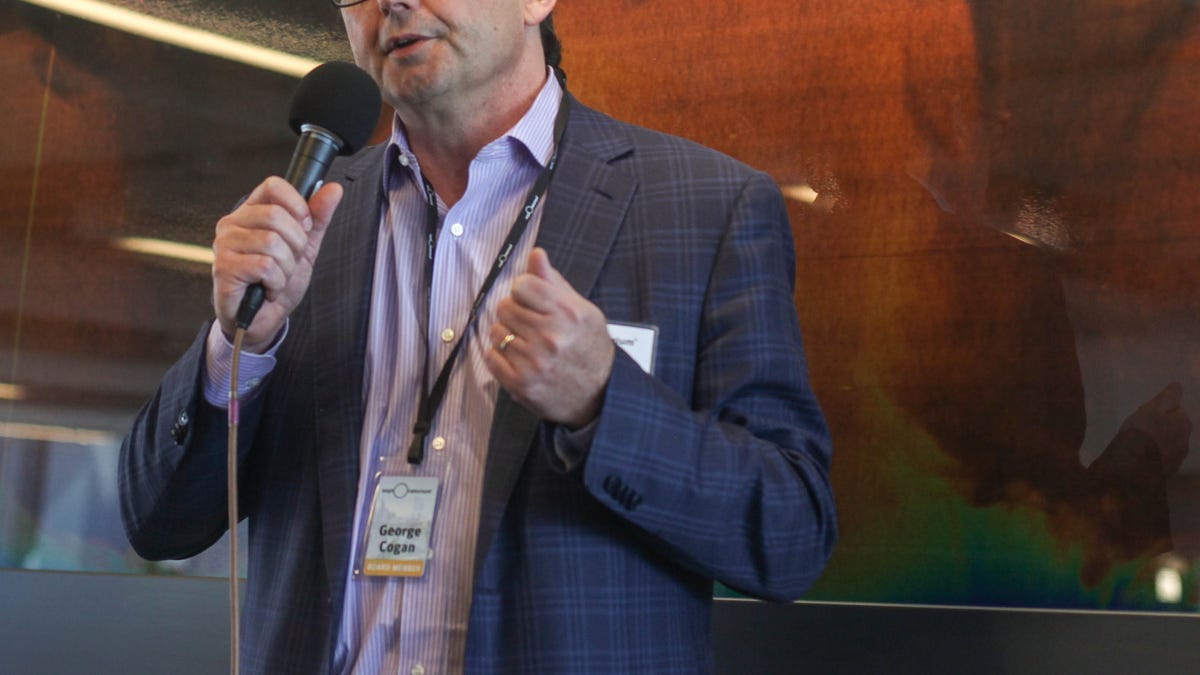San Francisco Exploratorium shows off its huge new digs
What's a hands-on science museum to do when it has a midlife crisis? The same as anybody else: it moves to a new, fancier home.

SAN FRANCISCO--Whether you're an adult looking for a cool place to have your kid's birthday party, or a kid wanting to get your hands messy with science, the Exploratorium has been a favorite for all ages since it first opened its doors more than 40 years ago. But it eventually faced a problem: space.
Originally located at the Palace of Fine Arts, the only building left standing in its original location from San Francisco's 1915 Panama-Pacific International Exposition, the Exploratorium had outgrown the Beaux Arts house and began planning to move. Now completed, the Exploratorium will reopen to the public on April 17.
Its new space straddles the city and the bay at Pier 15, an overhauled warehouse located near the heart of downtown San Francisco. The hands-on science museum, founded by J. Robert Oppenheimer's physicist brother Frank in 1969, is using its new location to drive its popular mix of art and science into the 21st century. And it's huge.
"This is made possible by the culture of inquisition and query," a visibly enthusiastic George Cogan, the Exploratorium's chairman of the board, told a press group previewing the new facility last week.
The 330,000-square foot complex, three times larger than its previous home, is divided into different galleries. The West Gallery, facing the city and offering views of landmarks like Coit Tower and the Transamerica Pyramid from the Exploratorium's entrance, focuses on "human phenomena." These include Poker Face, which gets people to explore how facial expressions and behaviors can be used to interpret human behavior; an updated version of the classic, pitch-black, touch-only Tactile Dome that's due to open this summer; Team Pac-Man, where you work with other people to win the classic game; and new exhibits examining human psychology such as the limited-run The Changing Face of What is Normal: Mental Health.
Exploratorium Senior Artist Pamela Winfrey said exhibits have changed and broadened their mandates. "An exhibit about listening is now also about context and relationships," she said.
While the West Gallery focuses on human and social science, the East Gallery is all about living systems and showcasing its connection to the bay it's housed above. Biology exhibits are hosted here, including the popular cow eye dissection stage, but there are also new exhibits like Plankton Populations, which presents the world's plankton count on a glass table map built by the Massachusetts Institute of Technology.
A coated glass lens turns the table map into an interactive display, allowing visitors to drill down into more erudite plankton facts. It's a cool display, but it also shows how Big Data can be turned into an accessible scientific experiment.
The Central Gallery focuses on sight and sound, with exhibits like the Giant Mirror, which inverts your image but also can change whispers into normal-volume sounds depending on where you stand; and 3D Live, which delves into stereo vision.
My tour guide during the preview, Lori Lamberston, explained that the Exploratorium is unusual in that it builds all of its own exhibits. Many science museums share their efforts, and the Exploratorium sends what it does elsewhere, but everything that visitors use is built on-site.
"Creative experimentation" headlines the South Gallery. Among its offerings, there's the Tinkering Studio, for building and hacking; Rolling through the Bay, a 100,000-toothpick kinetic sculpture that took decades to build; and a wind table that allows visitors to build objects and test-fly them.
The literal and figurative crown of the new Exploratorium is its Observation Gallery, which offers 360-degree views of the city and bay. More than any other part of the new compound, it connects the human and social sciences with the biological and physical sciences. Sensors on the roof, in the water, and in the silt send data here that visitors can explore in the Wired Pier; custom atlases allow you to explore the region in a decidedly more analog manner; and a bas-relief map sits below a projector from which you can display different data on the map.
With the flick of a dial, you can change the map from showing where 5-year-olds live to fog movement patterns over time.
Speaking of fog, the new Exploratorium has an outdoor gallery with both ticketed and free areas. Showcased here are exhibits like the new Fog Bridge, which envelops you in the one thing you didn't think San Francisco needed to produce more of in order to get you to focus on moving without using your eyes. There's also a shrine to Pi Day, which was created at the Exploratorium in 1989; and a sun dial.
Along with the galleries, there's the new Kanbar Forum, a cabaret-style theater the Exploratorium hopes will attract science lecturers from all over. Its sound system, still in the process of being installed during my tour, was donated by Meyer Sound, and it will offer a cash bar. The sound system is unique to the Exploratorium. Training employees to use it took three days, and it can apparently make the space sound like an intimate jazz club or a cavernous cathedral.
No doubt, the new Exploratorium takes an expansive view of science. Take a look at the new space in our gallery above.

